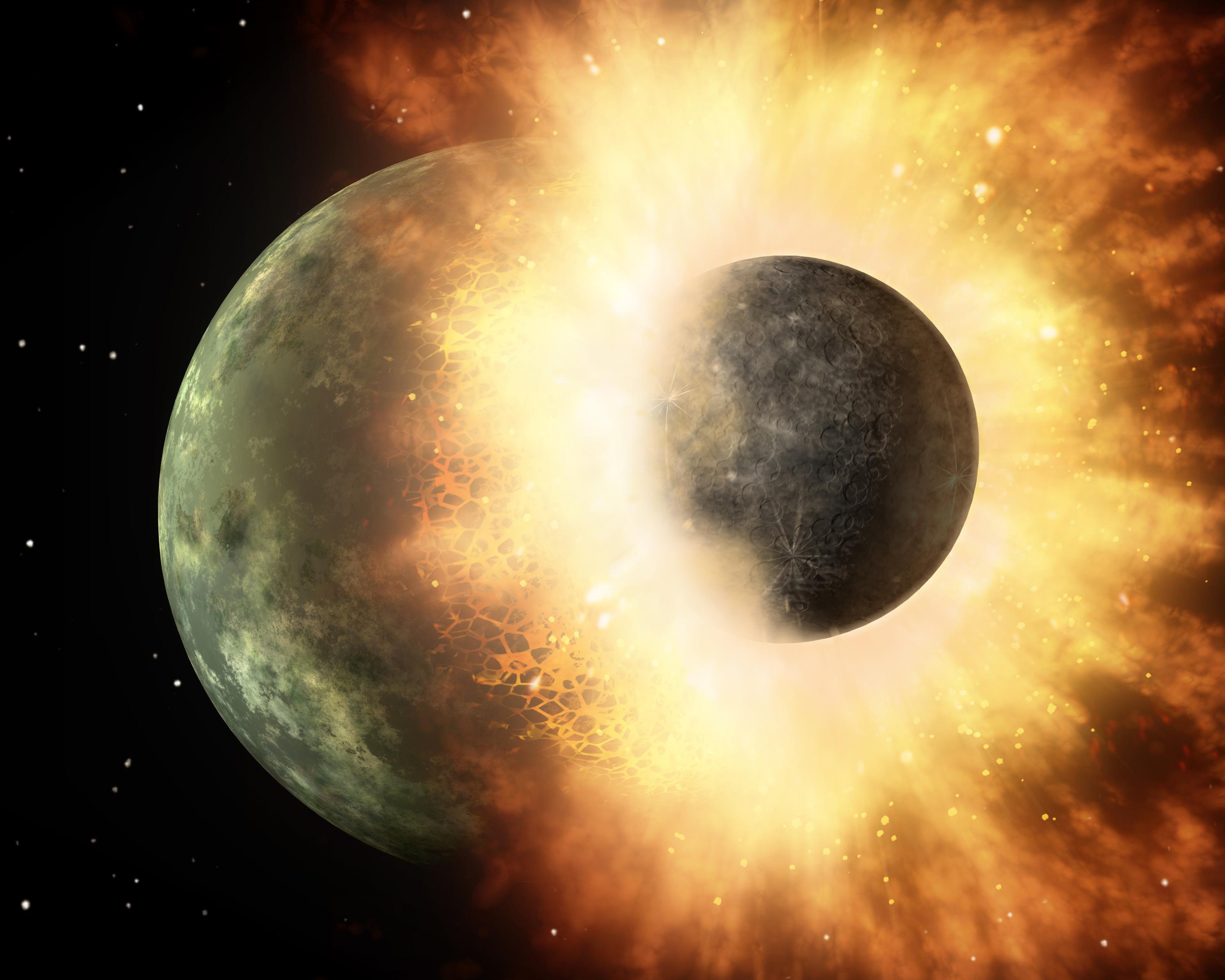The Moon Has Two Faces. This Cosmic Crash May Be Why

Ours is a moon with two faces: the nearside boasts a thinner and smoother crust, while the farside crust is thicker and dotted by impact craters left nearly undisturbed by lava flows.
The discrepancies have vexed scientists for decades, and in a new paper, researchers use models to explore what may be possible explanations for the stark differences. They argue that those distinctive sides could be the result of a giant impactor slamming into the moon and leaving a massive crater across the entire nearside.
"The detailed gravity data obtained by GRAIL has given new insight into the structure of the lunar crust underneath the surface," Meng Hua Zhu, a co-author on the new paper and a researcher at Macau University of Science and Technology in China, said in a statement released by the American Geophysical Union, which publishes the journal in which the research appeared.
Related: How the Moon Formed: 5 Wild Lunar Theories
The giant impact that the researchers propose here would be only one in a long series of moon-battering collisions. One of the two current theories about what formed the moon in the first place is another, still larger impact — which would explain why Earth and the moon appear to be made of identical ratios of different flavors of each element.
This nearside-farside impact would have come later, although still relatively early in our moon's history. The researchers modeled 360 different collisions and compared all the results to what we know about the moon today. That work suggests that an object the size of the large asteroid Ceres — 500 to 560 miles (800 to 900 kilometers) across — could have done the trick.
Such an object would have needed to originate fairly close to the two objects that originally collided to form Earth and the moon — in order to keep those elemental ratios so close. But the impact, the scientists write, could have left a crater stretching 3,500 miles (5,600 km) across the moon's surface, covering essentially the entire near side.
Get the Space.com Newsletter
Breaking space news, the latest updates on rocket launches, skywatching events and more!
In their models, the hypothetical collision took care of several differences between the two sides of the moon, including the extra layer that gives the farside crust its thickness — which would have been formed by debris from the impact falling down in a layer 3 to 6 miles (5 to 10 km) thick.
If the research holds up, it could displace other proffered explanations, such as the idea that Earth originally had two smaller, distinctive moons that collided to form the modern, two-sided moon.
Scientists are hoping to beef up their models with data from current and future moon missions, including in particular China's Chang'e-4 mission, which landed on the far side of the moon in January.
The research is described in a paper published Monday (May 20) in the journal JGR Planets.
- How the Moon Was Made: Lunar Evolution Explained (Infographic)
- Chang'e 4 in Pictures: China's Mission to the Moon's Far Side
- How Was the Moon Formed?
Email Meghan Bartels at mbartels@space.com or follow her @meghanbartels. Follow us on Twitter @Spacedotcom and on Facebook.
Join our Space Forums to keep talking space on the latest missions, night sky and more! And if you have a news tip, correction or comment, let us know at: community@space.com.

Meghan is a senior writer at Space.com and has more than five years' experience as a science journalist based in New York City. She joined Space.com in July 2018, with previous writing published in outlets including Newsweek and Audubon. Meghan earned an MA in science journalism from New York University and a BA in classics from Georgetown University, and in her free time she enjoys reading and visiting museums. Follow her on Twitter at @meghanbartels.









